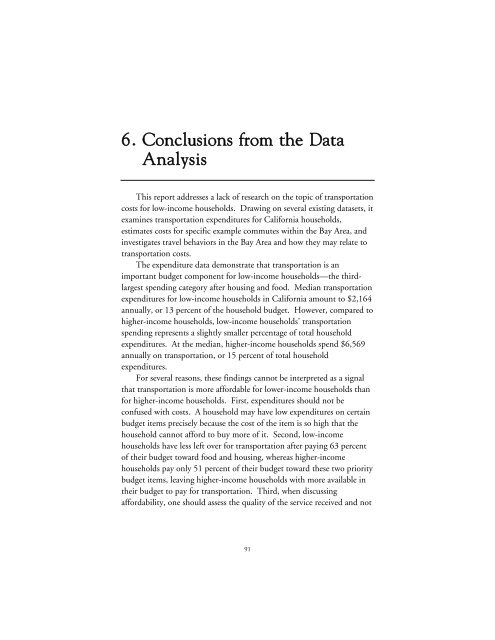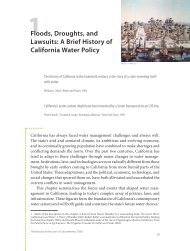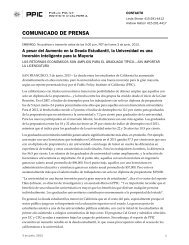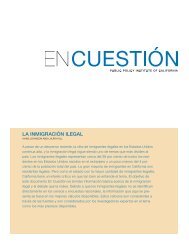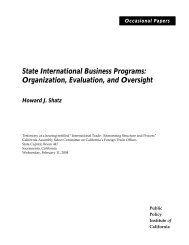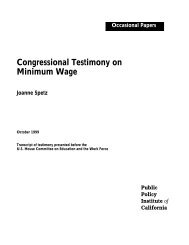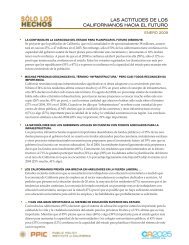Transportation Spending by Low-Income California Households ...
Transportation Spending by Low-Income California Households ...
Transportation Spending by Low-Income California Households ...
Create successful ePaper yourself
Turn your PDF publications into a flip-book with our unique Google optimized e-Paper software.
6. Conclusions from the Data<br />
Analysis<br />
This report addresses a lack of research on the topic of transportation<br />
costs for low-income households. Drawing on several existing datasets, it<br />
examines transportation expenditures for <strong>California</strong> households,<br />
estimates costs for specific example commutes within the Bay Area, and<br />
investigates travel behaviors in the Bay Area and how they may relate to<br />
transportation costs.<br />
The expenditure data demonstrate that transportation is an<br />
important budget component for low-income households—the thirdlargest<br />
spending category after housing and food. Median transportation<br />
expenditures for low-income households in <strong>California</strong> amount to $2,164<br />
annually, or 13 percent of the household budget. However, compared to<br />
higher-income households, low-income households’ transportation<br />
spending represents a slightly smaller percentage of total household<br />
expenditures. At the median, higher-income households spend $6,569<br />
annually on transportation, or 15 percent of total household<br />
expenditures.<br />
For several reasons, these findings cannot be interpreted as a signal<br />
that transportation is more affordable for lower-income households than<br />
for higher-income households. First, expenditures should not be<br />
confused with costs. A household may have low expenditures on certain<br />
budget items precisely because the cost of the item is so high that the<br />
household cannot afford to buy more of it. Second, low-income<br />
households have less left over for transportation after paying 63 percent<br />
of their budget toward food and housing, whereas higher-income<br />
households pay only 51 percent of their budget toward these two priority<br />
budget items, leaving higher-income households with more available in<br />
their budget to pay for transportation. Third, when discussing<br />
affordability, one should assess the quality of the service received and not<br />
91


